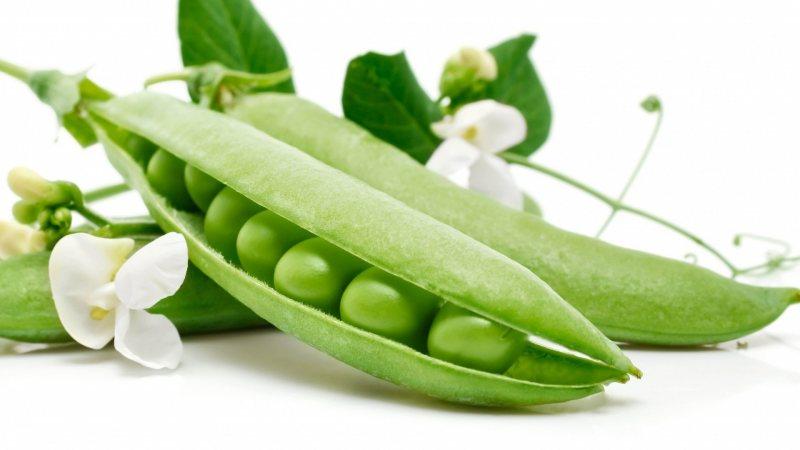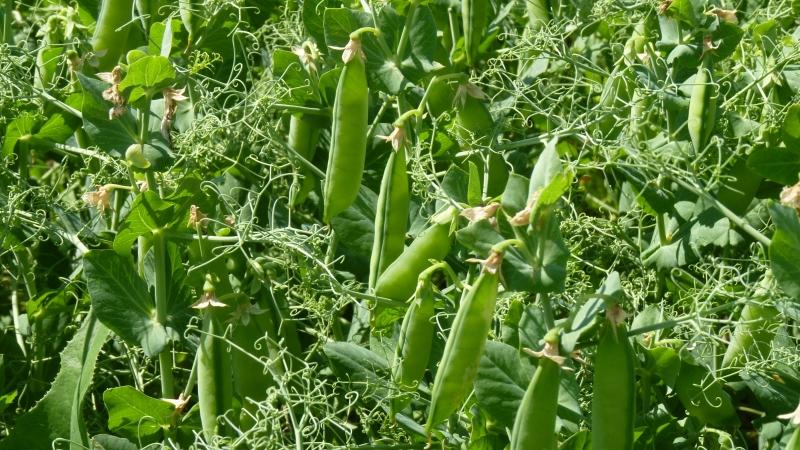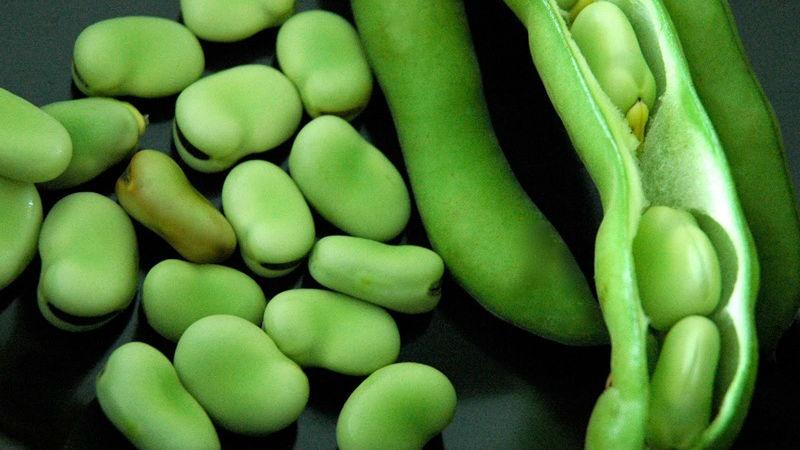Biological features of peas, which are best known
Peas - an agricultural crop grown on the territory of Russia, Belarus and Ukraine. It is a popular crop among gardeners, despite the fact that it is somewhat demanding on the soil. But there are many options for culinary experiments. In addition, the plant adorns the backyard. This article will focus on the pea as a plant, its structure and climatic "preferences".
The content of the article
Botanical description
Peas are one of the earliest ripening legumes. The growing season is 65 to 140 days. Self-pollination usually occurs in the closed flower phase. But in years with dry, hot summers, open flowering occurs, and cross-pollination occurs. Flowering lasts 10-40 days.
Plant life is divided into four stages: seedlings, budding, flowering and ripening. The last two stages are clearly layered. That is, flowering and the appearance of fruits begins from the bottom of the stem, gradually moving to the top. Also during this period, the maximum amount of green mass is noted.

Growth phases and stages of organogenesis
Peas have eight growth phases.
| Phases | Organogenesis stages and leading processes | Formation of elements of productivity |
| Seed germination | I - growth cone not highlighted | Plants per area |
| Seedlings | II - differentiation of the growth cone, laying of leaves and lateral axillary buds | Plant habit - height, branching |
| Shooting | III - an increase in the size of the growth cone, the formation of leaves on the shoot
IV - the formation of stipules and flower tubercles V - differentiation of flower organs VI - the formation of maternal pollen cells VII - intensive growth of the stem and all the elements of the flower. |
Number of beans |
| Budding | VIII - continued growth of flower elements, beginning of fertilization | Number of seeds in a bean |
| Bloom | IX - completion of fertilization, beginning of fetal growth | Number of seeds in a bean |
| Scapula formation | X - formation and continuation of fetal growth | Seed size |
| Pouring seeds | XI - seed growth, accumulation of assimilates | Seed size |
| Ripening of seeds | XII - the transformation of nutrients into spare | Seed size |
Light and heat requirements
Peas are a very light-loving culture; they are oppressed with a lack of sunlight. Therefore, the plant should be grown in an open area without shading from any buildings or other plants. Wherein the garden bed should be well protected from the wind.
Peas begin to germinate at a temperature of 1-2 degrees. Vegetative organs are better formed at 12-16 degrees. The most favorable temperature range is 5-19 degrees. But peas are able to endure frosts up to minus 8.
Moisture requirements
Peas are also very picky about moisture. As the plant grows, the need for water also increases. Its deficiency reduces the yield, while its overabundance prolongs the growing season. The right amount of water makes the stem strong, and the numerous fruits juicy.
The best soil moisture for peas is 70-80%. The period most sensitive to the amount of moisture is flowering and fruit formation.
It is best to water the peas once or twice a week. Watering should be abundant - 10 liters per square meter. In hot and dry weather, the amount of water can be increased to 15 liters. Watering should be done from a watering can with a strainer so that the water is evenly distributed on the surface. After watering, it is advisable to loosen the soil between the rows.
Soil requirements
Peas need balanced soils - no excess nitrogen, but with a moderate amount of minerals. Fertile soil with a neutral acid-base reaction is suitable for peas. Close proximity to groundwater or acidified soils will not benefit the plant.

Morphological structure
Peas belong to the legume family (Fabaceae). The most common species is the common pea (Pisum sativum). Let's consider its structure.
Root system
The root has a pivotal appearance, penetrates into the soil to a depth of about 1 meter. On the roots are nodule bacteria that assimilate nitrogen from the air and convert it into compounds available to the plant.
The structure of the pea seedling root is very simple. First, one rod is formed without any additional branches... Over time, additional formations grow at the root.
Stem and leaves
The stem of the plant is herbaceous, rounded, hollow inside. In most cases, lodging. For peas, special supports are installed, for which it clings with antennae and grows up. The stem can be up to two meters long.
The leaves are paired - two opposite each other. The leaf ends with a tendril. The leaves are ovoid. Depending on the varieties, the tip of the leaf can be rounded or pointed. The leaf venation of peas is reticulate. At the base of each leaf there are two semi-heart-shaped bracts. Their role is the same as that of leaves - photosynthesis. The leaf arrangement is next.
Flowers
The flowers are moth-type. Pea inflorescence is a cluster consisting of one or two flowers. The flowers are bisexual, self-pollinating. Pea flowers are usually white, light yellow, or light pink in color. Less commonly, reddish or purple. The flowers have 10 stamens and 1 pistil. 9 stamens grow together and surround the pistil, while 1 stamen remains free.

Fetus
Pea fruits are commonly referred to as pods. The pods come in different shapes: straight, curved, xiphoid, sickle, etc. The length of the beans is also different and ranges from 4 to 12 cm... One bean contains 4 to 10 peas.
It is the seeds that are used for food - round or slightly angular formations of green color. Ironically, the sweetest varieties have wrinkled seeds. The structure of the pea seed can be seen in the image.
Read also:
Let's sum up
Sowing peas are a crop worthy of your garden. Knowing the structural features and requirements of the plant for climatic factors, you can collect a large amount of juicy green peas. The main thing is the abundance of sunlight and watering, as well as the installation of supports for the possibility of attaching the antennae of the plant to them.